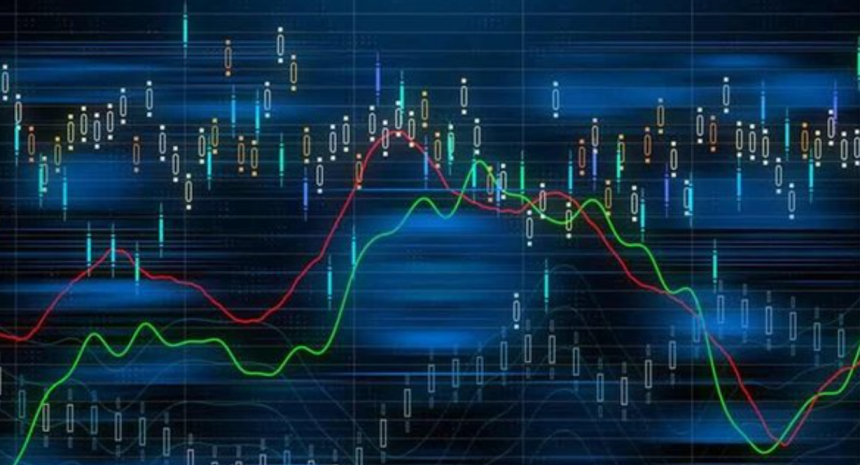Forecasting forex trend strength can be a daunting task. With so many variables in play and different factors influencing market movements, it’s puzzling to know which currencies will act favorably and which will fail during a particular time.
Fortunately, by understanding how macroeconomic trends may alter currency prices and identifying good sources of information, forecasting forex trend strength doesn’t have to be an overwhelming challenge.
This blog post will discuss some of the best strategies for forecasting forex trend strength – a must-know concept for any investor and trader. With the knowledge gained from this post, you’ll have all the information needed to make smarter decisions regarding your investments – no matter what year we’re in.
So let’s dive right in.
Best Strategies for Forecasting Forex Trend Strength in 2023
In this fast-paced and ever-changing world of forex trading, it’s crucial to stay ahead of the curve and be equipped with the best strategies for forecasting forex trend strength. This blog post will look at the top five strategies traders should consider when forecasting forex trend strength in 2023.
From technical analysis to market sentiment, here are the various techniques traders can use to stay ahead of the game and make informed decisions in the forex market.
- Technical Analysis
- Fundamental Analysis
- Market Sentiment
- Trend Lines
- Moving Averages
Let’s know briefly about them all.
1. Technical Analysis
Technical analysis uses past market data, such as price and volume, to identify patterns and predict future market behavior. This involves analyzing charts and identifying trends, support, resistance levels, and other indicators to gain a deeper understanding of market behavior.
The trend line is one of the most popular technical analysis tools for forecasting forex trend strength. By connecting highs and lows on a price chart, trend lines can help traders identify the trend’s direction and determine the trend’s strength.
2. Fundamental Analysis
Fundamental analysis uses economic, financial, and other qualitative and quantitative factors to evaluate an asset’s value. In the forex market, fundamental analysis involves analyzing a country’s economic data, such as interest rates, inflation, and gross domestic product (GDP), to determine its currency’s value.
For example, a country with a strong economy and rising interest rates is likely to have a strong currency, while a country with a weak economy and low interest rates is likely to have a weaker currency.
By analyzing this data, traders can make informed predictions about the strength of a currency and adjust their trading strategies accordingly.
3. Market Sentiment
Market sentiment refers to the overall attitude of the market towards a particular currency or asset. This can be influenced by various factors, including political events, economic news, and even social media.
Traders can use market sentiment analysis tools, such as sentiment indicators and social media monitoring, to gauge the overall mood of the market and make predictions about future market behavior.
By understanding market sentiment, traders can better understand the underlying drivers of the market and make more informed trading decisions.
4. Trend Lines
Trend lines are a crucial tool for identifying trends in the forex market and determining the strength of those trends. By tracking price action alone and recognizing shifts in support or resistance levels, trend lines enable traders to gauge the direction of currency pairs and identify signs of entry or exit in the market.
Recognizing these points of strength or weakness allows traders to make informed decisions based on market conditions and risk tolerance. You won’t need a complicated system or computerized algorithm – learning how to draw trend lines is an invaluable trading tool that will serve you well into the future.
For example, a steep trend line indicates a strong trend, while a shallow trend line suggests a weaker trend. By using trend lines, traders can make more informed predictions about the market’s future direction and adjust their forecasts.
5. Moving Averages
When it comes to predicting forex trend strength in 2023, moving averages have become one of the most popular tools among traders. Using this technique, they can analyze price movements over a certain period and identify specific trends.
Moving averages can also help traders determine the right time to enter or exit a trade based on the support or resistance levels observed over time.
By summing up the price data over a specified period and creating a single line, you can quickly buy and sell signals and determine whether a trend has legs.
Moving averages can help short-term and long-term traders forecast the strength of a given trend; in short, they put accurate forecasting in your hands.
Conclusion
Forex trend strength is a useless metric unless you take the time to forecast it correctly. There are many ways to do this, but the most important thing is to have a system in place that can help you make accurate predictions.
The best way to trade in Forex markets is by taking a comprehensive Forex trading course from a reputable training institute. Such courses provide deep insights into market trends and analysis and offer practical guidance on choosing the right strategies to forecast trend strength.
The best way to find such a system is by researching and finding one that has been proven to work. This blog will surely help you find a suitable strategy for your forecasting strengths.
Once you have found a good system, stick with it and don’t let anyone else tell you what to do.















